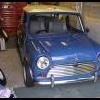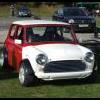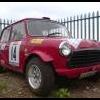
Broken Bolts In Steady
#1

Posted 03 April 2012 - 08:04 PM
#2

Posted 03 April 2012 - 08:09 PM
#3

Posted 03 April 2012 - 08:53 PM
#4

Posted 03 April 2012 - 09:17 PM
It takes about 3 hours to remove the engine, one hour (max) to drill & Heli-Coil and 4 hours to re-fit the engine.
It really is the only way to do the job, and a lot of us have been there, I know I have more than once.
#5

Posted 03 April 2012 - 09:17 PM
If the bolt simply sheared, and there is no reason to think that the thread is tight, I would cautiously try an easyout, but don't apply enough torque to break it, or you WILL be taking the engine out, and finding an emgineering works who can use spark erosion to remove the remains.
If the threads are damaged, as Cooperman says, they will need to be drilled to the correct size and helicoiled. The helicoil kit comes with the correct drill, tap and inserts. You will need to helicoil to get back to 5/16" UNF if the thread is damaged, because there is no slightly larger bolt that can be used. M8 is much the same as 5/16", and the next sizes up, 3/8" or M10, would need the sleeve for the bushes bored out more than is possible.
Try not to break through into the waterways. You should be able to feel the drill go through the end of the bolt, and be able to stop it, but if you do break through, it is not a total disaster, you will just need RTV or PTFE tape, or some other suitable sealant, on the bolt when you refit it.
Repair brackets for the engine steadies are a complete waste of time. They are invariably badly designed, and will suffer fatigue fracture soomer or later. It is best to fix what you have, and find out why they are breaking. You really need upper and lower steadies, engine mounts in good condition, good bushes in the steady bars (poly in one end is ok, poly in both is too hard and will make things break, rubber both ends is just about ok, if in good condition). The bolts really MUST be grade 8.8, or if you can get them, 10.9, and torqued up correctly. The cranked bracket must have its correct spacer (or substitute washers) so it fits snugly, and there must be a large washer, or the original plate, between bush and engine block.
Other aftermarket steadies are also useless if used in the wrong combination. You must have an upper and lower steady, as close as possible to being in line vertically, otherwise the torque makes the engine wiggle. A top steady at one end and bottom at the other, for instance, is very bad, and will quickly kill the mounts and the exhaust. There are a lot of stupid gimmicks on the market, even now. The standard upper and lower steadies are virtually in line and do the job adequately.
If assembled carefully, and bushes replaced when the wear (20,000 miles or more) they should never break.
I should add, in view of Cooperman's comment, that it is possible to get devices which hold the drill at right angles to the surface of the block, but it still does need a lot of care.
Edited by tiger99, 03 April 2012 - 09:20 PM.
#6

Posted 03 April 2012 - 09:30 PM
#7

Posted 04 April 2012 - 06:42 AM
#8

Posted 04 April 2012 - 07:22 AM
#9

Posted 04 April 2012 - 01:40 PM
As this happens a fair bit, would it not be prudent to drill and re-tap the steady threads in the block to a slightly larger size?
Then you would need 3/8" UNF bolts and a sleeve for the steady bar bush to take the bigger dia. bolt.
#10

Posted 04 April 2012 - 03:21 PM
#11

Posted 04 April 2012 - 04:47 PM
Yes but what I meant was would it be a good thing to do and would the meat around that part of the block be ok!
It couldn't do any harm, but you would need to make a new centre bush for the bush - not difficult - and drill out the holes in the bracket to suit.
Actually the only reason it's an issue is because people (me included!) have over-tightened them and sheared the bolt(s).
#12

Posted 04 April 2012 - 05:15 PM
#13

Posted 06 April 2012 - 06:33 PM
#14

Posted 06 April 2012 - 06:57 PM
#15

Posted 07 April 2012 - 12:32 AM
1 user(s) are reading this topic
0 members, 1 guests, 0 anonymous users
















